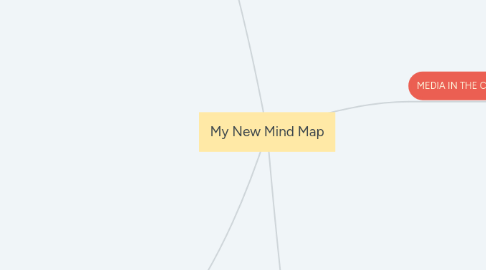
1. AESTHETICS OF FILM AND TV
1.1. the film form
1.1.1. short film
1.1.2. full-length film
1.1.3. films are motion pictures
1.2. modes of film production
1.2.1. preproduction
1.2.2. production stage
1.2.3. postproduction stage
1.3. film formats
1.3.1. narrative
1.3.2. documentary
1.3.3. animation
1.3.4. experimental
1.4. film image composition
1.4.1. grammar rules and syntax structures
1.5. motion framing concepts
1.5.1. how moving elements interact in a given film frame may impact the meaning of the story
1.6. kinds of tv shows
1.6.1. informative programming
1.6.2. entertainment programming
2. AESTHETICS OF NEW MEDIA AND SOCIAL MEDIA
2.1. new media
2.1.1. internet delivered forms of information
2.1.2. web-based applications
2.1.3. mobile applications
2.1.4. to upgrade what currently exists
2.1.5. digital technology
2.2. convergence and characteristics
2.3. from synergy to transmedia
2.3.1. media conglomerate
2.3.2. synergy is a media product expansion
2.3.3. media franchise
2.3.4. transmedia
2.4. kind of social media and its varying uses
2.4.1. print-based
2.4.2. audio-based
2.4.3. photo-based
2.4.4. video-based
2.4.5. social networking sites
2.4.6. call and chat-based
2.5. relevance of social media in today's society
2.5.1. personal communications
2.5.2. business and costumer care tools
2.5.3. social services and governance
2.5.4. educational tools
2.5.5. advocacy campaigns for social change
2.5.6. traditional media coverage and social media enhancement
2.6. intersecting traditional media, new media, and social media networking
2.6.1. journalism+internet= blogging
2.6.2. broadcasting+internet=podcast
2.6.3. film+internet=youtube
2.6.4. tv+internet=streaming media
2.6.5. advertising+social media=social media influencers
2.6.5.1. celebriries
2.6.5.2. social media celebrities
2.6.5.3. thought leaders
2.6.5.4. everyday influencers
2.6.5.5. brand advocates
3. MEDIA IN THE CONTEXT OF MIL
3.1. how human communication processes
3.2. "The medium is the message"- McLuhan
3.3. MIL thematic coverage
3.3.1. differentiating media literacy
3.3.2. media and information sources
3.3.3. media and information languages
3.3.4. literacies of the 21st century
3.4. types of media
3.4.1. facebook
3.4.2. twitter
3.4.3. google
3.4.4. pinterest
3.4.5. traditional media
3.4.5.1. written or print media like news paper and magazines.
3.4.6. new media
3.4.6.1. computer - originated
3.4.6.2. internet - delivered information
3.5. industrial age
3.5.1. embracing more technological advances
3.5.2. 1830-1840
3.5.3. examples
3.5.3.1. kodak camera
3.5.3.2. recording sound
3.5.3.3. printing press
3.5.3.4. telegraph
3.6. electronic age
3.6.1. information society
3.6.2. wireless technology
3.6.3. mass media
3.6.4. 1950 - 1960
3.6.5. phonograph discs
3.7. digital age
3.7.1. computerized version of information
3.7.2. easily transferable
3.7.3. 1970 - 1980
3.7.4. interlinked systems
3.7.5. cyberspace
3.8. prehistoric age
3.8.1. earliest human
3.8.2. used writing symbols in order to communicate
4. AESTHETICS OF IMAGE, TEXT, AND AUDIO
4.1. framing and reading
4.1.1. construct, compose, or imagine something
4.2. newspaper and journalism
4.2.1. news is defined as "the communication of information on current events via print, broadcast, internet.
4.2.2. journalism is defined as " the collecting , writing, editing, and presenting of news
4.2.3. certain newspaper formats are trusted more than the others.
4.3. photography and timeless image concepts
4.3.1. photography is the process of recording images through a chemical interaction.
